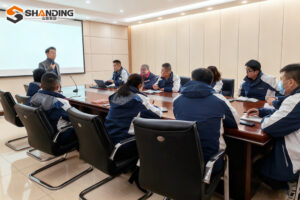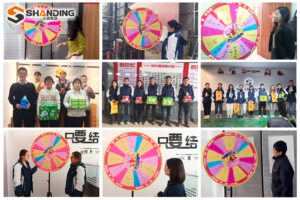In the context of increasingly fierce competition in the global construction machinery market, China’s small excavator industry is completing the metamorphosis from ‘OEM production’ to ‘independent brand at sea’ at an amazing speed. The latest data show that in 2023, China’s small excavator exports increased by more than 40% year-on-year, accounting for nearly 70% of the global market share, and in Southeast Asia, Africa, Europe and other markets to gradually replace the traditional international giants, and become a vivid footnote to the upgrading of ‘Made in China’.
OEM start: low profit behind the accumulation of technology
Time back to 10 years ago, China’s small excavator industry is still in the ‘OEM’ stage. Relying on cheap labour and supply chain advantages, domestic enterprises for Europe and the United States, Japan and South Korea brands OEM production of parts and components and even the whole machine, but due to the lack of core technology and brand premium, long-term trapped in the low-end of the industrial chain. The profit of an OEM excavator is less than one-tenth of the branded products, and face the risk of order transfer at any time.
Technological breakthrough: from ‘running with’ to ‘parallel running’.
In recent years, China’s small excavator enterprises annually invested in R & D funds accounted for more than 5%, far more than the industry average. Breakthroughs in key technologies have become the core support for the rise of independent brands:
Electrification revolution: in response to overseas carbon emission regulations and construction scenarios, Chinese companies took the lead in launching lithium-ion version of small excavators, reducing energy consumption by 60% and noise by 40%, which are in short supply in the EU market.
Intelligent control system: the landing of 5G remote control, AI-assisted operation and other functions have enabled Chinese equipment to show efficient adaptability in extreme environments such as Southeast Asia’s tropical rainforests and the Middle East’s deserts.
Localisation of core components: through the acquisition of overseas hydraulic enterprises and joint research with universities, the reliability of domestic hydraulic pumps, motors and other components has reached international standards, and the cost is only two-thirds of imported products.
Brand overseas: from price competition to value competition
Precise attack on market segmentation: developing rubber track anti-sag models for Southeast Asia’s rice planting needs, and customising low-emission and quiet versions for European municipal projects, the differentiated products help the company seize the segmentation field.
Globalised service system: establishing overseas spare parts centres, training more than 10,000 local maintenance engineers, and launching ‘equipment + operator + maintenance’ packaged service by some enterprises, upgrading single product sales to solution output.
Leveraging on the ‘Belt and Road’: China-Laos Railway, Yawan High Speed Railway and other projects to drive the demand for equipment in countries along the route, China’s small excavators have become the main force of the ‘Belt and Road’ project construction by virtue of their high cost-effective performance and quick response capability.
Future outlook: from ‘made in China’ to ‘global brand’.
According to the forecast of China Construction Machinery Industry Association, the global mini excavator market will exceed USD20 billion in 2025, of which the proportion of electrified products is expected to reach 30%. At present, more than 10 Chinese enterprises have set up R & D centres or production bases overseas, and gradually climbed up to the high-end of the industrial chain through patent layout and technical standard output.
‘The real brand leap lies not only in sales volume, but also in the ability to define industry standards.’ Industry experts pointed out that when China’s small excavators from ‘selling products’ to ‘set the rules’, from ‘cost-effective’ to ‘technical ecology’. ’, a silent value revolution is reshaping the global construction machinery map.




